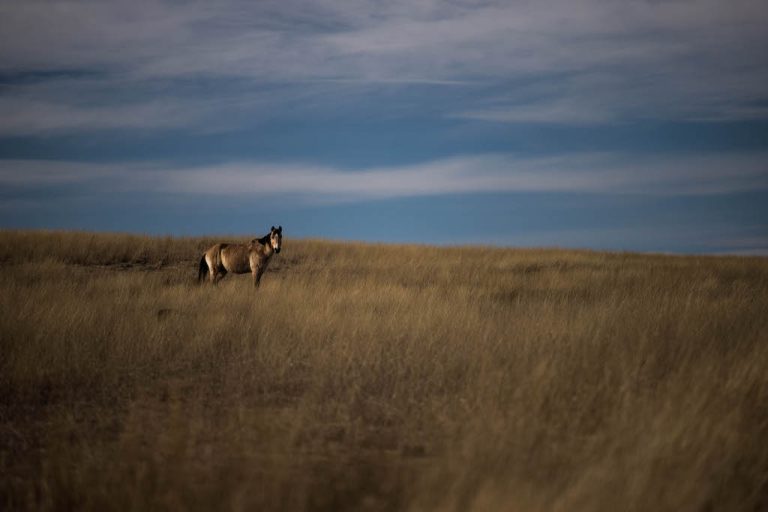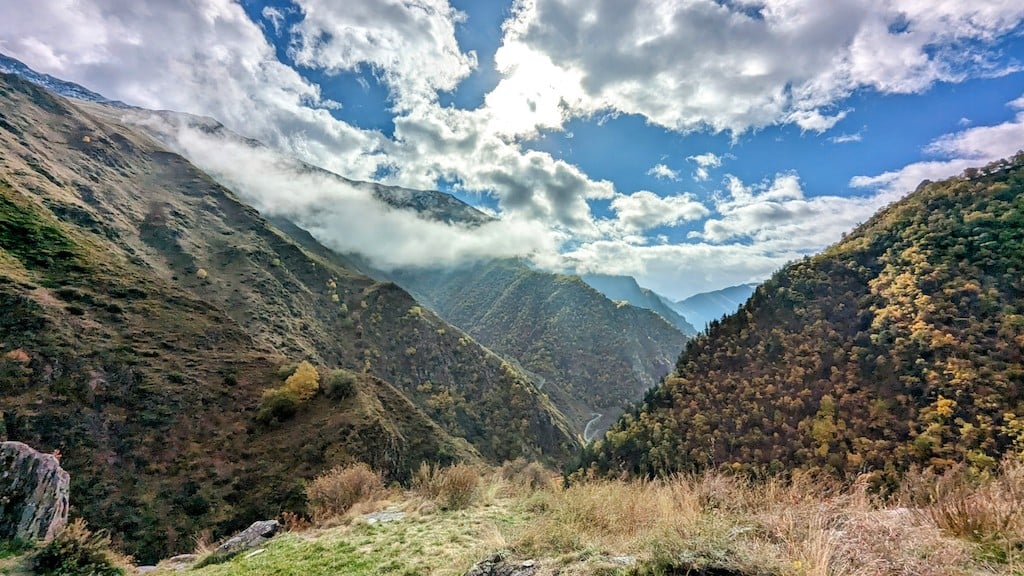This piece was originally published in Wired For Adventure Volume 21.
“To love.”
In the house hanging off the cliff, my guide Alex was making a toast. “It moves everything in the world, in the universe. It is all because of love.”
Having only had one hour of sleep thirteen hours ago, I was absolutely hanging off his every word. He was right, it was because of love. Why I was here, in this house, on this cliff in Georgia, eating this cheesy bread thing.
I’d flown into Tblisi at 6am, checked into a hotel at 6:30, confused the receptionist checking out again at eight, and was whisked from the writhing streets of the capital to the mountains of the east before I’d even realised I’d arrived. It was my intention to make a good first impression with the others in my party – all journalists, historians, filmmakers, and regional experts – but the gentle twists and turns of the Datvis Jvari Pass lulled me to sleep not long after we’d set off. I caught in hallucinatory glimpses the bright reds and oranges of the October trees that parted like waves up the mountain sides, and the villages with time-honoured names and only one house left. As we reached the top of the pass that marks the boundary between the south and north Caucasus, we were greeted by a blizzard that delivered us into the Arghuni Gorge, where the villages of Shatili, Old and New, cling to the face of the cliffs.
“… and to friendship!” Another toast. “It’s amazing that we can all be here together today.”
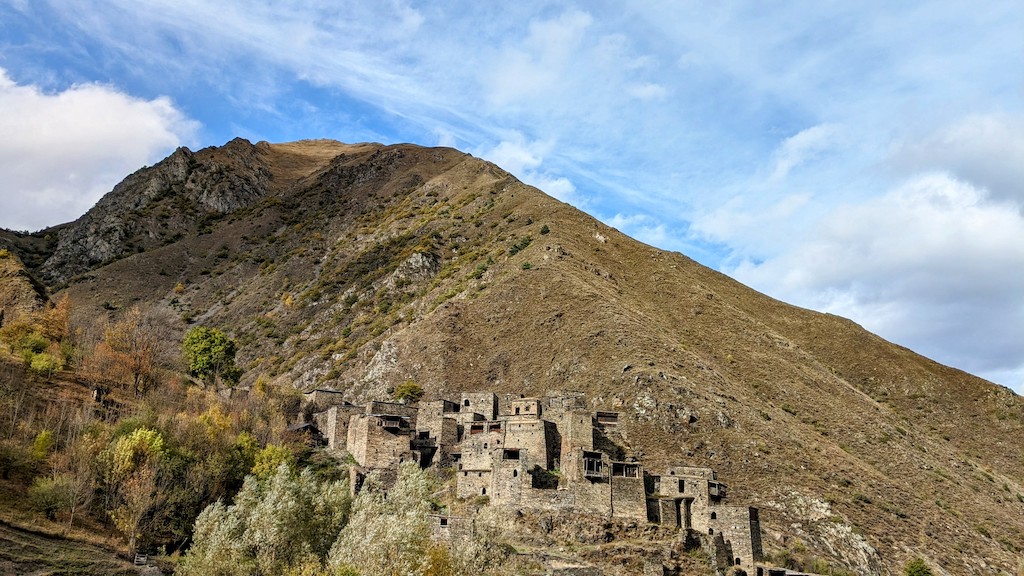
60 towers spring out of the mountains to create Old Shatili, all arcing over one another like just-popped jack-in-the-boxes lolling on their springs. It feels like a miracle that they aren’t still wobbling around in the frigid winds. Though the tiny passageways of the fortress are all littered with slates that crack under foot, the medieval and early modern buildings still stand with nothing keeping them together at all. The thousands of tightly and meticulously packed stones even house small accommodations and a rooftop bar. It is as much like a fairytale as any place I’ve been.
New Shatili, not 100 metres from the old, could have been airlifted from an upmarket ski-resort in France. The row of wood panelled, angular buildings boasted distinctly more concrete and a welcome refuge from the cold mountain air. Traditional Khevsuri dresses adorn the walls as a reminder that, though these houses by name and nature are new, the 22 inhabitants of Shatilli had subsisted for generations in this very spot. Serving the same purpose was the warm smell of khachapuri (the cheesy bread thing) and the gentle din of the toasts that had me raptured in a half-dream state.
“Does anyone else want to toast?”
This is the ‘Institute of Table’, or Supra. The Georgian tradition of toast-making. At the institute, a tamada, or toast-master, is elected, who then speaks on a relevant subject to which everyone raises a glass but does not drink. Then, with permission from the tamada, another person may add their two cents to the subject, drink their drink, and pass the baton once more. This continues until everyone’s glass is empty and it is up to the toast-master to dream up a new toast. A good toastmaster “must possess great rhetorical skill and be able to consume a large amount of [alcohol] without showing signs of drunkenness.” Without casting any aspersions, Alex was an excellent toastmaster.
Entire evenings are passed in this way, they can be both sombre and celebratory and, on this occasion, they were answering all of life’s big questions for me. We’d covered friendship, love, the universe, and Georgia before I had to call it a night, finishing my glass of quintessential amber wine and declining a chacha nightcap (a very strong Georgian liquor similar to grappa). I didn’t take my chance to address the institute on this first night in Georgia, though it wasn’t for lack of things to say. So, if you will indulge me as your tamada, I was gifted a whole bottle of chacha on my trip that I still need to get through. Welcome to the Institute of Table.
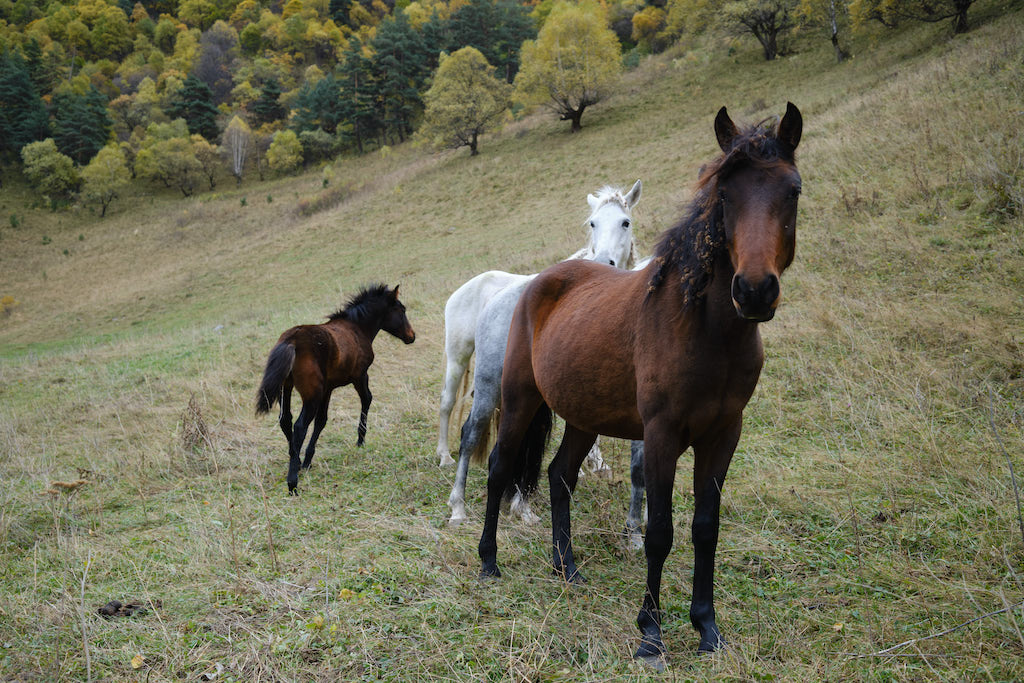 Photo: Nika Kachibaia
Photo: Nika Kachibaia
To Horses
I was in Georgia to ride horses. I’ve never had a particular affinity for horses nor a talent for riding them. When I was a kid I actually watched a girl get her ribs crushed by one so maybe I’ve been subconsciously avoiding them for most of my adult life. Nevertheless, when the opportunity presented itself to follow a herd along an ancient transhumance route it sounded way too folksy to pass up.
With the cold weather setting in, we’d spent a little while on our way to Shatili in traffic jams with livestock. Avalanches of woolly faces tumbled towards our cars, flanked by bear sized shepherd dogs who were not happy to see us. Twisted horns, bared teeth, and eventually shepherds with long sticks washed over us until we could continue our journey up into the cold.
Sweeping around another bend, 30 or so small horses, manes all stuck with burrs like baubles on Christmas trees, milled about on the verge waiting to make their pilgrimage downhill. Many bore the scars of a summer of lucky escapes, having narrowly dodged the jaws of some bear or wolf. Alex stopped the car and jumped out; “These are the horses. They came down from the mountains today.”
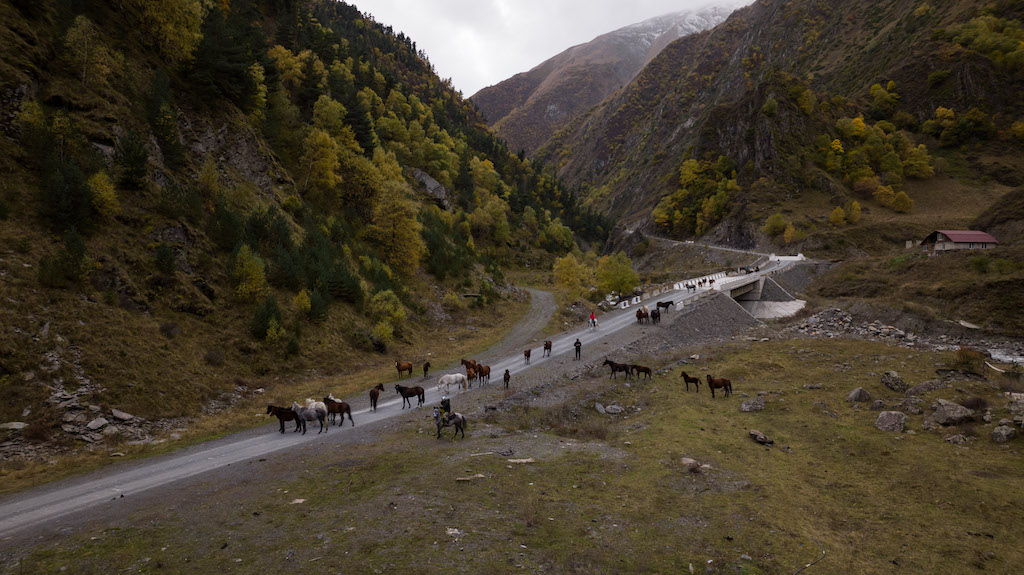 Photo: Danila Iliushchenko
Photo: Danila Iliushchenko
We watched as a group of horsemen corralled the herd with whips and calls. It was strangely graceful as the rag tag group began falling into step and flowing as one up the road. They were suddenly all speaking the same language. Due to various exchanges between Soviet and Georgian pasture laws, the herd could roam freely in the mountains for the summer. Using centuries old methods, the herders find them, round them up and bring them to the start of the equally time-worn livestock trail that runs down the eastern border. This year, it took an extra day than planned to get everyone together at this seemingly random section of road and many didn’t seem best pleased to be back under the saddle. I braced my ribs and remained enthusiastic anyway.
Georgian horses originated in Tusheti and, according to legend, were imported to Khevsureti as a prize for a battle victory in the 11th century. They are small, compact horses, bred for carrying heavy loads through treacherous mountain passes and can survive on little food and water. They have always been vital to the survival of Georgian shepherds and are part of many rituals in the republic, especially in the northeast. Being called to service to honour the living, heal the sick and revere the dead, there are entire festivals launched by horse races barrelling through riverbeds so riders can claim a coveted flag and a new sheep.
A decline in conventional farming methods and a dwindling year-round population is threatening both tradition and income for the farmers. Many are turning to horse tourism as an answer for both. People like me can be guided along these ancient transhumance routes, worn in by horses carrying produce and seeking somewhere warm to spend the winter. It was a privilege to watch this little interchange of history and culture; horses and herders settling in to the new mood of the mountains as they had done forever.
I took a few steps back as an American tourist who had been riding for more years than I had been alive struggled to calm his grey-blue horse, disoriented by the changing of the seasons. “Only experienced riders will be on the horses today.” Okay, phew. I let my ribcage relax and breathed a beginner’s sigh of relief.
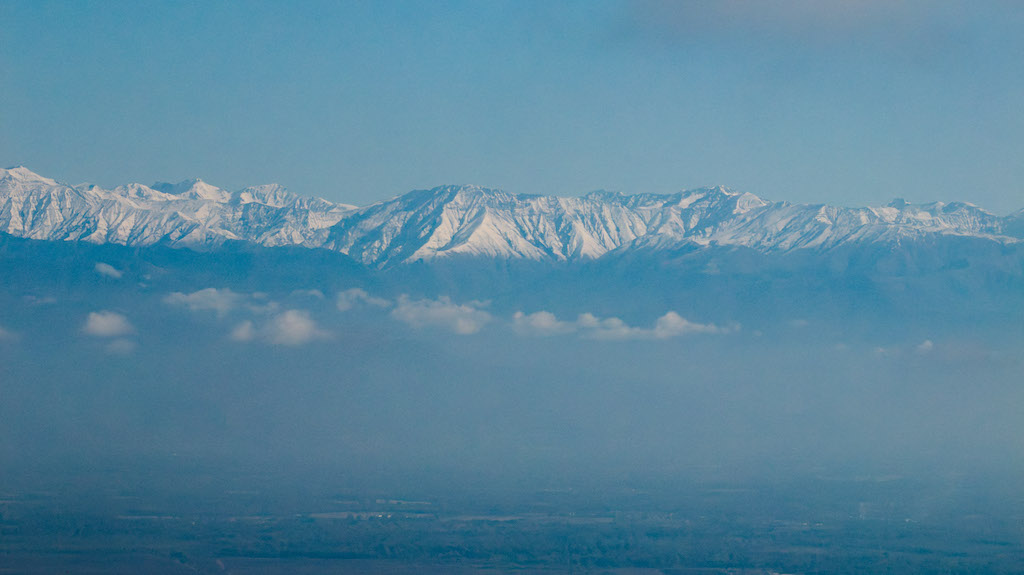
Photo: Danila Iliushchenko
To the Beginning
Everything began in Georgia. Wine, thread, Eurasian civilisation, everything – at least according to the Georgians. “This,” Alex picked his phone up off the table, “these were invented here, and this,” grabbing the breadbasket and laughing.
Those of us not riding as the horses got used to being ridden again began a whistle stop tour of the region. We gazed upon the bones of a self-sacrificing plague colony (the necropolis of Anatori), climbed to a castle with the best views in the world (Mutso) and watched amber wine being fermented in qvevris (buried clay pots typical of Georgian wine making).
Slowly moving south into Kakheti was like entering a new country. Gone was the kaleidoscope of autumn colours that dressed the mountains. They had been replaced by the bright green and resplendent sun of the vineyards that spilled into the Alazani Valley. Move south again and the rolling hills flatten into a sea of yellow and gold for as far as the eye can see. These are the borderlands of the Vashlovani national park.
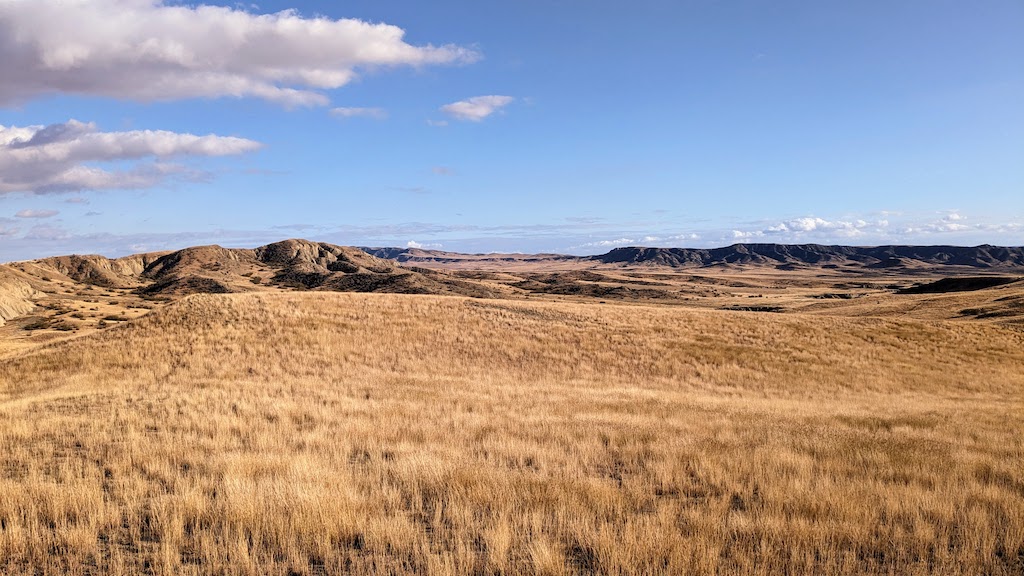
It feels impossible that each of these places are squashed shoulder to shoulder in such a small country but Georgia is full of these lovely little contradictions. 16 microclimates make bedfellows of dense forests and wide-open skies, yellow deserts and frozen glaciers, huge mountains and tiny, twisting streets. A thriving urban culture sits across from the oldest traditions on earth. Everyone speaks so lovingly of their country but are always the quickest to lament its inevitable flaws.
Many countries claim to be the birthplace of wine and civilisation, and I’m sure a few want to claim thread as well, but with modern borders totally unrecognisable from what they once were, it’s hard to trace the origins of the things we take national pride in today. In any case, the oldest pot of wine, along with Zezva and Mzia, the earliest humans found outside of Africa, were dug up from one of (what we now know as) Georgia’s many landscapes. Everywhere you turn here you find something new and three more things that are impossibly old.
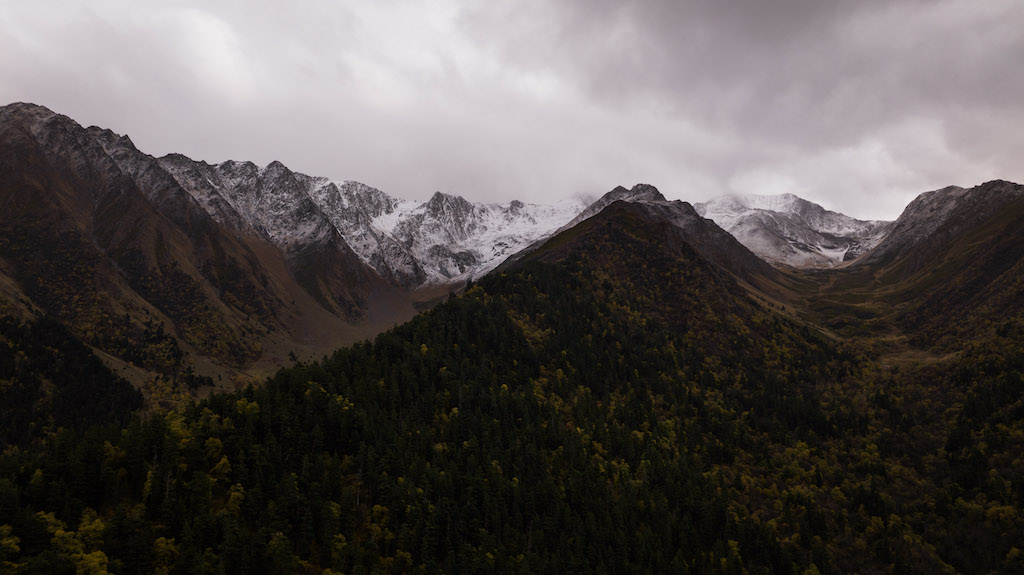
Photo: Danila Iliushchenko
To Ia
If you’ve ever been to Georgia you’ll be familiar with the brown ‘Wine Route’ signs that helpfully guide you from one winery to the next and practically put another glass into your outstretched hand. They look very similar to the UK’s tourist attraction road signs and they are all down to Ia Tabagari. She revolutionised food and wine tourism in the country, has about six business, has repeatedly been asked to be the Minister for Tourism and has on every occasion turned it down.
One more thing about her is that she loves horses – to a problematic degree if you ask her son. That’s why around half of the 30 horses rounded up in Khevsureti will spend the summer at her ranch, burr free and far more ready to accommodate beginner riders than when we first met.
By day three of the trip, horses, riders and beginners in cars had all arrived at the Lost Ridge Ranch, which is nestled in the hills of the Kakheti wine-country, not far from the popular tourist town of Sighnaghi. Blessed with direct sunlight from dawn to dusk and temperate weather all year round, I would happily live the rest of my days here, surrounded by horses and yet more amber wine.
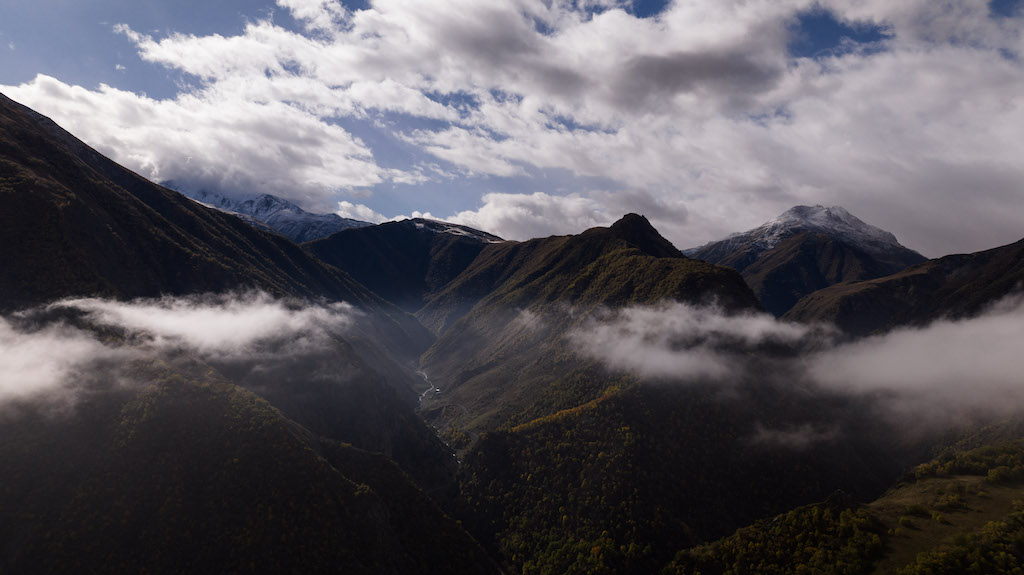
Photo: Danila Iliushchenko
Ia is hoping to do what she did for Georgian wine for Georgian horses. If you stay at the ranch you can go on day rides in the area or join a multi-day trek like the one that set off in the mountains at the beginning of my trip. She also works with an adventure tourism school that helps locals earn a living in the industry. Ten people have already graduated as certified guides. She is helping to keep alive and visible the remarkable role that horses have always and will always play in Georgian culture.
Finally seizing my opportunity to get in the saddle, I spent the final two days of my trip exploring the sprawling hills beneath the ranch with Jorito and Lurja, two of Ia’s horses. We bumbled gently through the trails, passing the gleaming marble of the monastery of Saint Nino, who brought Christianity to Georgia, and traversing the farmlands and forests. It is a wonderful way to experience a new place, from the back of a horse. The creatures immediately double the size of your little travelling band with their unique personalities and, in some ways, you get to see the place through their eyes for a little while. That’s why I spent most of my time looking at the ground because Jorito’s unique personality trait was snacking. It was a perfect crash course in controlling a horse with reigns because I wouldn’t have made it five metres from the ranch if I couldn’t convince him away from the nearest patch of grass. Lurja, on the other hand, which roughly translates to dark blue for her colour, was far less interested in her stomach and was very accommodating to my lack of ability. We were, of course, accompanied every step of the way by Romeo and Paloma, the faithful and immeasurably friendly ranch dogs.
To Sakartvelo
As the sun set on my final day at the ranch, I watched the rolling vineyards of Kakheti sink into the rift of the valley below. The mighty Caucasus stand sentinel in the distance, their white peaks obscuring the line between land and sky. It is a mesmerising view and one that barely scratches the surface of everything this country has to offer.
Running with the herd from the mountains to the warm embrace of the ranch was like moving through a world’s worth of countries and a history’s worth of time. Georgia’s fierce culture was on display at every turn. It’s in the castles perched on the hills, in the food – which nine times out of ten you can look at the tree or cow or field that made it whilst you eat – and, as not much of a drinker, it’s in the soured faces of the wine makers when you turn down their offer of wine. The wine makers, by the way, must be 90% of the Georgian population. That isn’t an official statistic but I don’t think I met anyone on my trip who didn’t have a hand in small production wine making.
Though it is tradition to begin an evening’s toasts by raising a glass to Sakartvelo (Georgia), being new to this whole tamada thing you’ll have to forgive me for messing up the order. Next time, I’ll be sure to kick things off with this final toast to Georgia; I’ll be back soon.
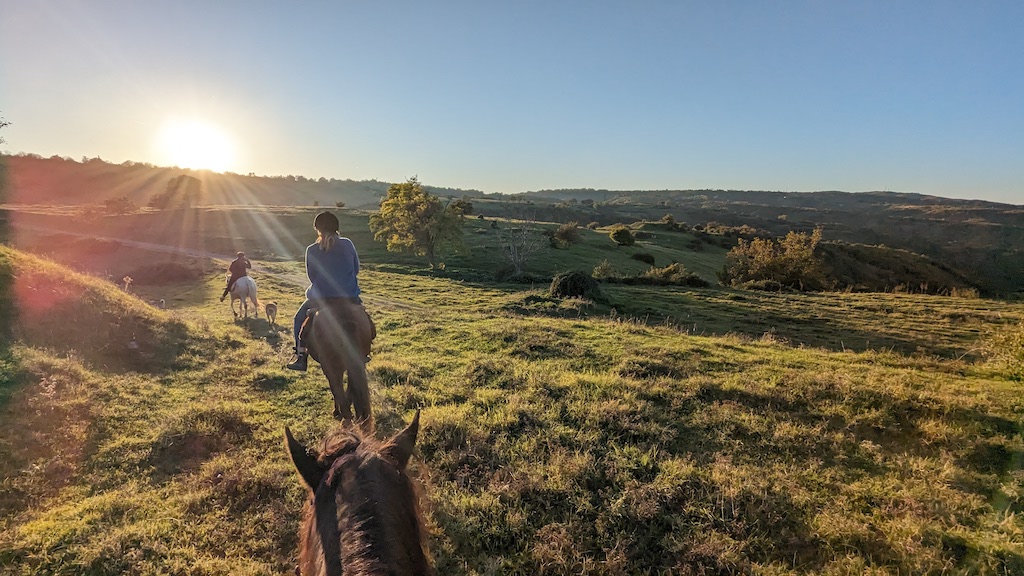
Giddy Up
To learn more about horse culture in Georgia head to horsebackgeorgia.com or visit lostridgeinn.com to meet Ia, Lurja, Jorito and the rest of the Lost Ridge team.



